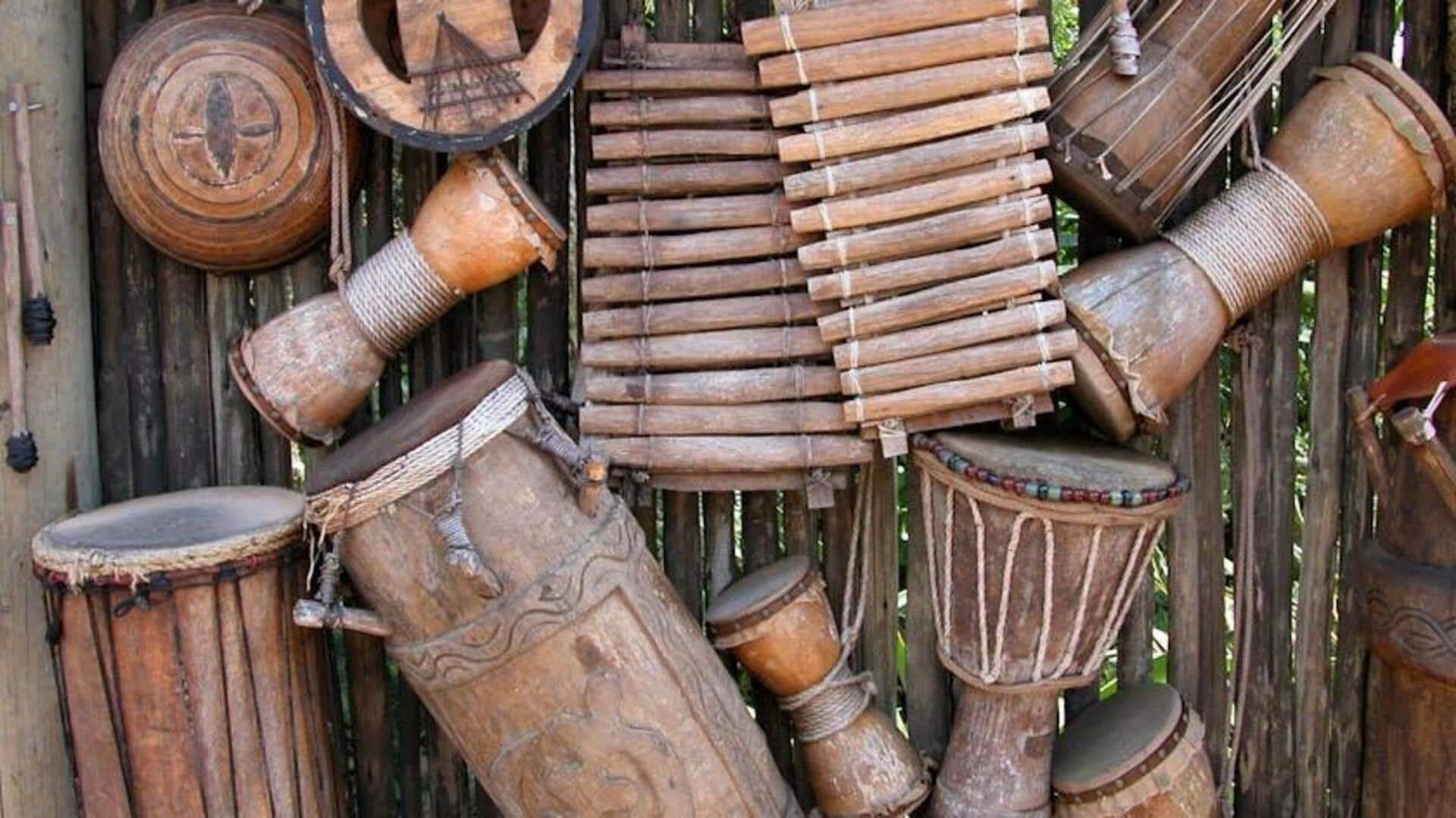
The melodic journey of traditional African instruments
What's the story
Delving into the vibrant world of African music uncovers a treasure trove of traditional instruments, each radiating a unique sound and echoing the heartbeat of its culture. From the pulsating rhythms of drums to the soul-stirring melodies of stringed instruments, these timeless tools of expression paint a vivid picture of Africa's rich musical tapestry and its profound influence on the global symphony of sounds.
Rhythm
The heartbeat of Africa: Drums
Drums hold a special place in African music and culture. They are not just instruments, but tools of communication. The djembe, hailing from West Africa, is one of the most iconic. Played with bare hands, this drum creates a rich variety of tones, making it adaptable to different musical styles. But its importance goes beyond entertainment; it's a heartbeat at ceremonies and communal gatherings.
Harmony
Strings that sing: The kora
The kora, a 21-string lute-bridge-harp from West Africa, is crafted from a halved calabash covered with cow skin. Its sound is both gentle and resonant, blending beautifully with the human voice. Skilled players pluck its strings with their thumbs and index fingers, creating complex patterns that can imitate speech or weave intricate rhythms. This ability to "speak" through music makes the kora a powerful instrument for storytelling and lyrical expression.
Melody
Wind whispers: The algaita
The most significant wind instrument in West Africa is the algaita, a large oboe-like instrument. It has a strong, almost piercing sound that can be heard for miles, ideal for open-air festivities and celebrations. Crafted from wood with seven finger holes, its haunting melodies and deep African roots make it a truly unique and powerful instrument.
Soul
Percussion pioneers: The mbira
The mbira or thumb piano is a unique idiophone instrument originating from East Africa. Crafted with metal tines secured to a wooden board (usually housed within a resonator), musicians pluck the tines with their thumbs, creating beautiful, harmonic sounds. It holds a profound spiritual significance, serving as a bridge between the physical world and the ancestral spirits during ceremonial rituals.
Creation
Crafting sounds: Instrument-making
These traditional African instruments are handcrafted from locally sourced materials, including wood, animal skins, and gourds. This process requires a high level of craftsmanship passed down through generations. Beyond sustainability, this traditional crafting method ensures that each instrument carries cultural narratives and the personal imprint of its creator, further emphasizing the profound link between African artistry and the natural world.